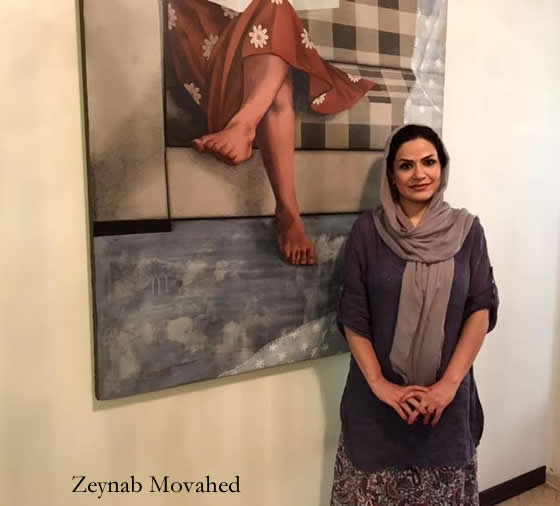 Born in Tehran, in 1981, Zeynab Movahed is a female Iranian painter with a very unique style and voice. In 2007, she received her Bachelors of Arts degree in painting from Art & Architectural Azad University in Tehran. Then in 2011, received her Masters of Arts degree from Art & Architectural Azad University. Since then she has had many solo and group exhibitions stretching from the east coast to the west coast, including a very successful exhibition this year at the Dacia Gallery in New York City.
Born in Tehran, in 1981, Zeynab Movahed is a female Iranian painter with a very unique style and voice. In 2007, she received her Bachelors of Arts degree in painting from Art & Architectural Azad University in Tehran. Then in 2011, received her Masters of Arts degree from Art & Architectural Azad University. Since then she has had many solo and group exhibitions stretching from the east coast to the west coast, including a very successful exhibition this year at the Dacia Gallery in New York City.
Cinema Without Borders: I have a cliché question for you, what inspired you to become a painter and how did you get it started your painting career?
Zeynab Movahed: I started to get to the field of painting in my childhood and even then I had a passion for painting. In 1999, when I was 17 years old, I started to attend painting courses, but very soon I left those classes and started to seriously to paint on my own and even before attending the college, I had my first individual exhibition.
CWB: You have a very unique and independent style in painting and design that is specific to you, how did you find your style and your way of painting?
ZM: The reason for the independence that you have noticed in my paintings is that I never paid any attention to the current movements in that field. I know that there have been many painters and artists that have been addressing female issues and women’s problems and there are times that I cover the same issues in my paintings, but at the same time, I always try to be faithful to myself and express everything through my thoughts and concerns and my own personal emotional conditions as a woman.
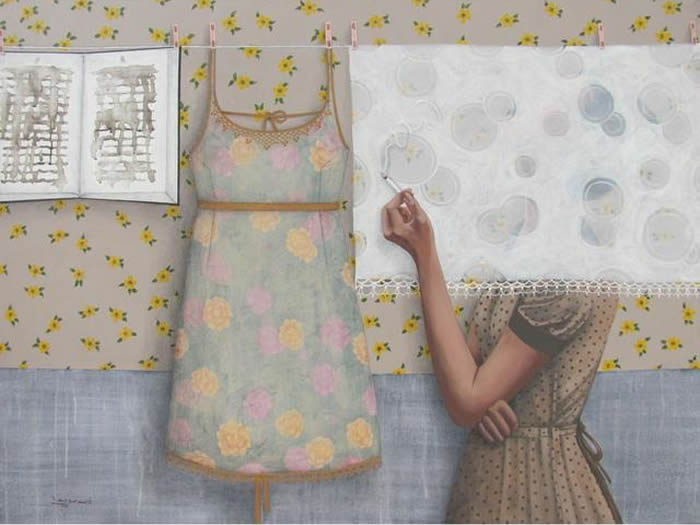
CWB: Your womanhood has a great presence in your paintings, what do you think about that?
ZM: I totally agree with you, as I mentioned this in previously, it is so important to me that my audience, even they don’t know me, could easily recognize my work as paintings created by a woman. Every single painting that I have deals with the issue of me being a woman.
CWB: Are there social issues and life conditions you wanted to reflect your work?
ZM: I have to say a lot. In the region that I live, the conditions and problems of the women’s life are quite complicated and there are more problems in a woman’s life than there are in other parts of the world.
Women in my homeland had been dealing with lots of taboos and limitations and prejudice from a long time ago and most of that still exists in our life, and now, maybe sometimes the form of the problems are changed, but not their real nature. As a woman and artist, I cannot be indifferent to these problems, especially when I have personally experienced them as a woman.
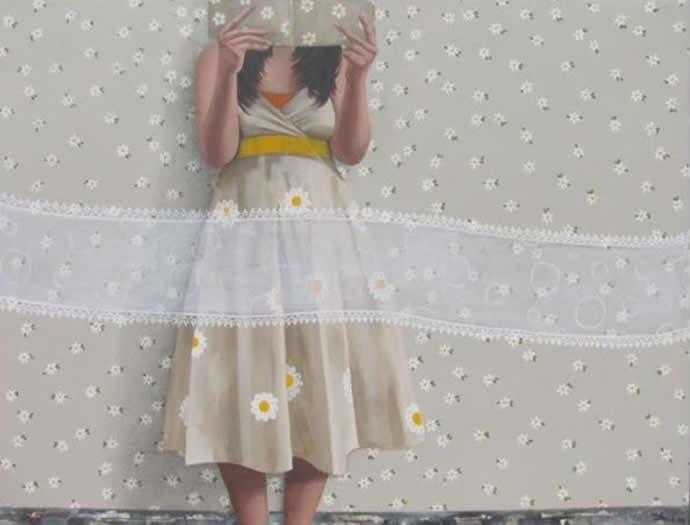
CWB: Repeated patterns have a special place in your artwork, is this intentional?
ZM: Yes, this is quite intentional. About six or seven years ago I started to work on cloth patterns and shapes on women dresses and I worked on them extensively as I believed that these shapes and patterns have a great potential to show the process of a woman’s life, to show the continuous cliché of their lives, and the boring life that women have and also pass the message to the audience very easily.
CWB: Elements such as a cloth-line carries many ideas of yours in your paintings, how do you pick such elements?
ZM: Years before I started painting this collection, I had been attracted to the element of cloth-line, both for its visual look and it’s symbolic meaning. I was staring at the cloth-line and clothes hanging on it and I was thinking each of these clothes have something that represents one of us. But again, I wanted to use the cloth-line to show the boring repetition in the life of the woman, and also that the women are not considered as they should be, and also I wanted to show all the injustice that happens in a woman’s life
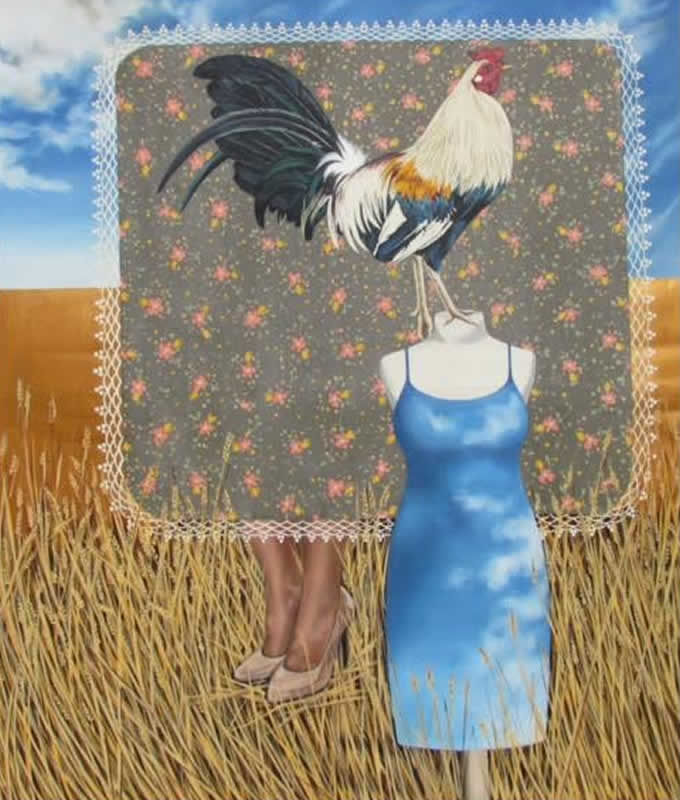
CWB: Roosters have a special place in your recent paintings, why rooster? Because it is so colorful? Or because it is a symbol of masculinity?
ZM: In my collection last year this was called “We are sleeping and you’re awake” I started to use the Rooster element in my work which is a symbol of masculinity and using it I wanted to challenge the male dominated society. Of course, rooster colors and its shape also attracted me, as well its male monopolistic behavior that was and is a great element for me to express my goals. In my paintings rooster with its male dominant presence enters the feminine world and overpower everything to the extent that the image of the woman fades away and only some elements from the womanhood is left on the scene, and this directly refers to the rules for male dominated society.
CWB: Your style is quite unique, but how do you avoid repeating yourself?
ZM: The most challenging task for an artist is keeping your style and your visual achievements and at the same time avoiding the risk of repeating yourself. Obviously, this is an important issue for me, and in different periods of my work that usually takes about a year for each period, I’m very careful that my work does not fall into the trap of repetition and end up becoming boring.
Cloth and cloth patterns had a special place in four different periods of my work, but in my recent paintings, I had used them enough and there was no reason to use them any longer, therefore I eliminated them all. But the woman presence and intentional elimination of her face and her social challenges have been kept in my work.
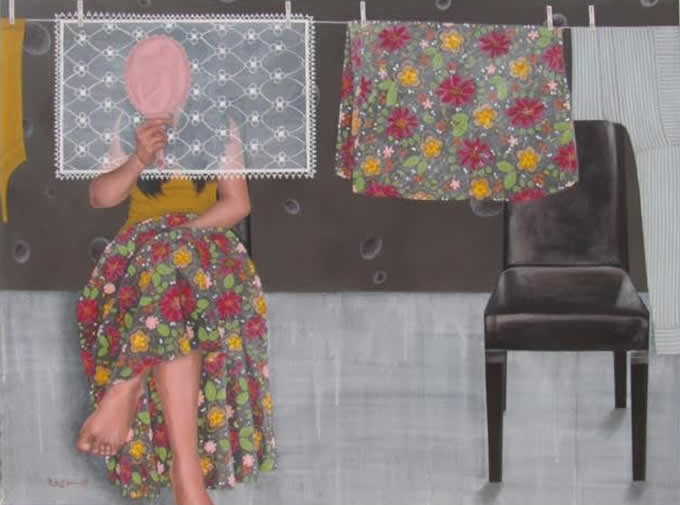
CWB: Please tell us about your exhibitions.
ZM: I have had seven individual exhibitions and more than twenty group exhibitions in Iran, Kuwait and United States. My last exhibition was on March 2016 in New York with a great attendance and I had a lot of wonderful responses that encouraged me to do more work and have more exhibitions outside Iran.
http://www.zeynabmovahed.com/
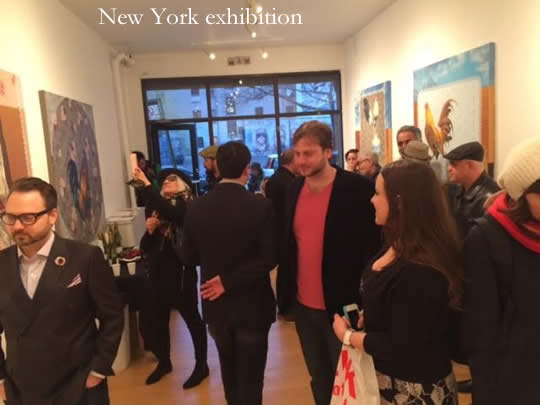 Solo exhibition:
Solo exhibition:
2016 – Dacia Gallery – New York – Manhattan – USA
2015 – AM art & design Gallery – Kuwait – Kuwait
2014 – 26 Gallery – Tehran – Iran
2013 – Fa Gallery – Kuwait – Kuwait
2012 – Mohsen art Gallery – Tehran – Iran
2008 – Atashzad art Gallery – Tehran – Iran
2002 – Afarineshnaghsh art Gallery – Tehran – Iran
Group exhibition:
2016 – Dacia Gallery – New York – Manhattan – USA
2016 – ISF charity’s art auction – San Francisco – USA
2016 – Raad charity’s visual art auction – Tehran – Iran
2015 – Iran artists house – Tehran – Iran
2015 – 6.no Gallery – Tehran – Iran
2015 – Sayeh Gallery – Tehran – Iran
2015 – Viuna Gallery – Tehran – Iran
2014 – Negah Gallery – Lavasan – Tehran – Iran
2013 – Hoom art Gallery – Tehran – Iran
2013 – Abra Gallery – Los Angeles – USA
2013 – Atbin art Gallery – Tehran – Iran
2013 – Igreg art Gallery – Tehran – Iran
2013 – Sheila art Gallery – Tehran – Iran
2012 – NYC art advisory – Collection 2012 – New York – USA
2012 – Shirin art Gallery – Tehran – Iran
2012 – Seyhoun art Gallery – Tehran – Iran
2012 – Participate in the Tehran Expo – Iran
2012 – Participate in the Eighth Biennial Painting Tehran – Iran

